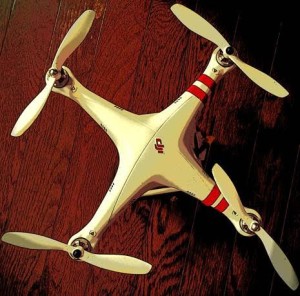 As a kid, I was really taken by Sputnik, a shiny Soviet satellite that circled the earth, and then I was captivated by anything having to do with the American astronauts, crossing the airless dark void, leaving earth behind, to walk on the moon.
As a kid, I was really taken by Sputnik, a shiny Soviet satellite that circled the earth, and then I was captivated by anything having to do with the American astronauts, crossing the airless dark void, leaving earth behind, to walk on the moon.
I was equally fascinated, however, by the lower stratospheric aerodynamic marvels of Igor Sikorsky who made the most amazing helicopters – the most massive heavier-than-air machines that hovered like humming birds.
In May, on my birthday, I became the proud owner of a remote control quadcopter, the Phantom, more popularly known as “a drone,” of course, quite smaller than the tiniest Sikorsky helicopter, but amazing in its own way, hovering at eye level right in front of you, brushing your hair back with the surprising force of its spinning rotors, carrying a photographic payload that takes high-def pictures, when the drone shoots straight up at impressive speeds to a 1,000 feet and higher.
Once you’ve assembled this flying machine, requiring that you have actually read the instructions, it soon becomes clear that the average drone is light enough by weight that you have to become adroit at yaw (think rudder control or angular velocity), roll (left-right) and pitch (front/back) to surf the slightest wind pressing against your light weight drone. (You can study my early efforts on YouTube – 1st – https://youtu.be/_YnZmJmnb-4, and 2nd – https://youtu.be/WF0ga_iYaM8 ).
In January of this year, there was a big flap about how the White House radar, intended to detect flying objects like planes and missiles, missed entirely a drone like my own that crashed into a tree on the South Lawn about 3 AM. What I find entirely credible is that the owner of the drone said he lost control of it – and lost control of his privacy in the bargain. For good reason, the tyro drone operator was not charged with any crime. Continue reading →


